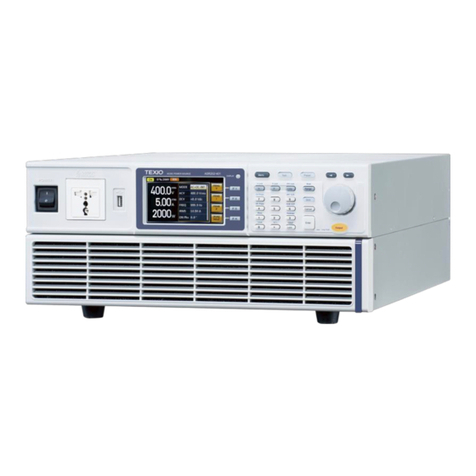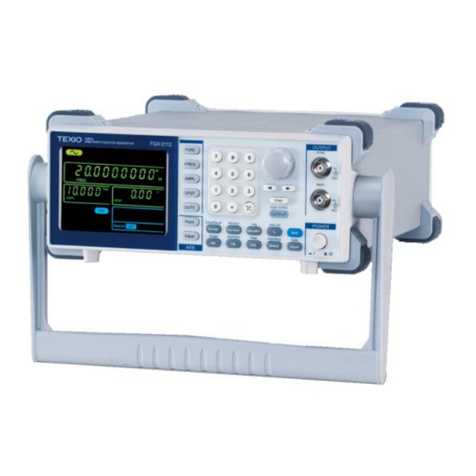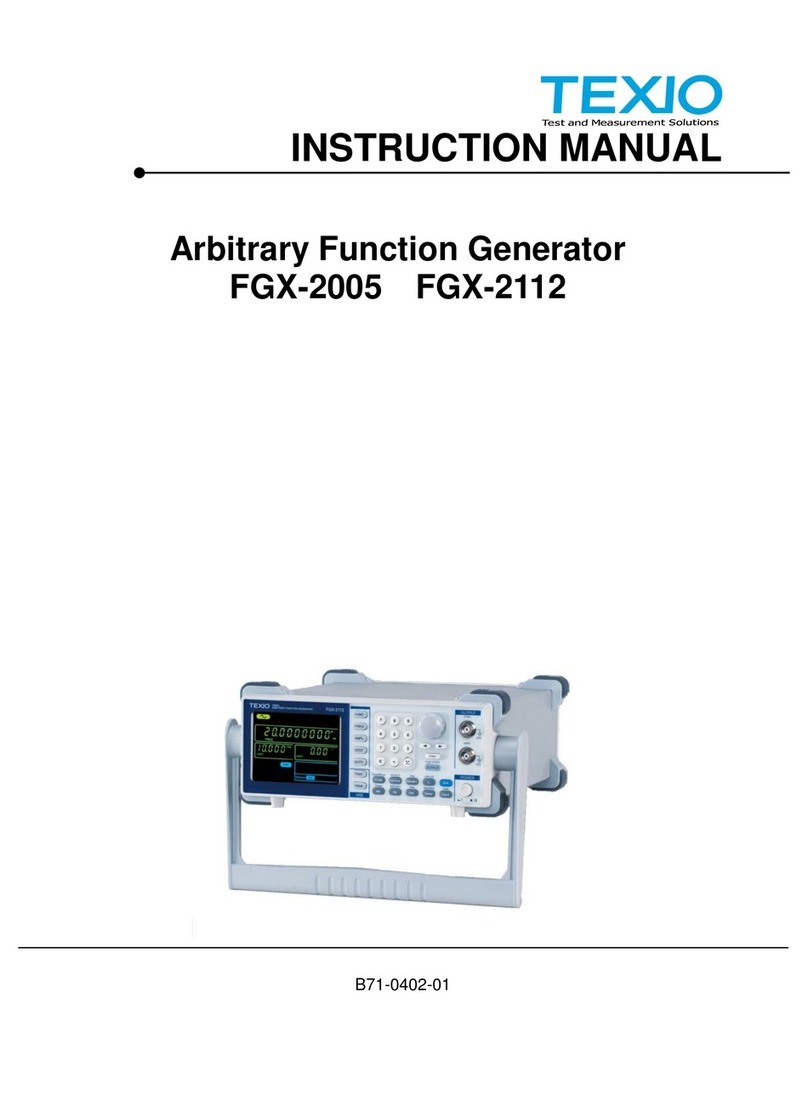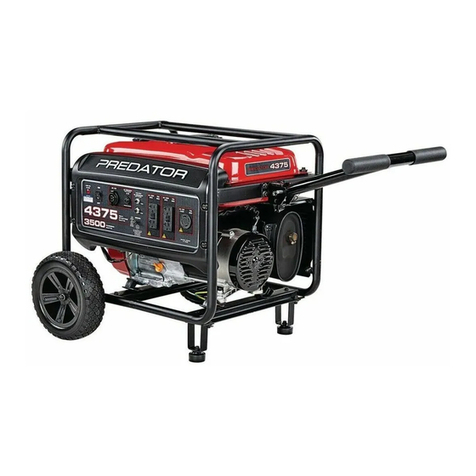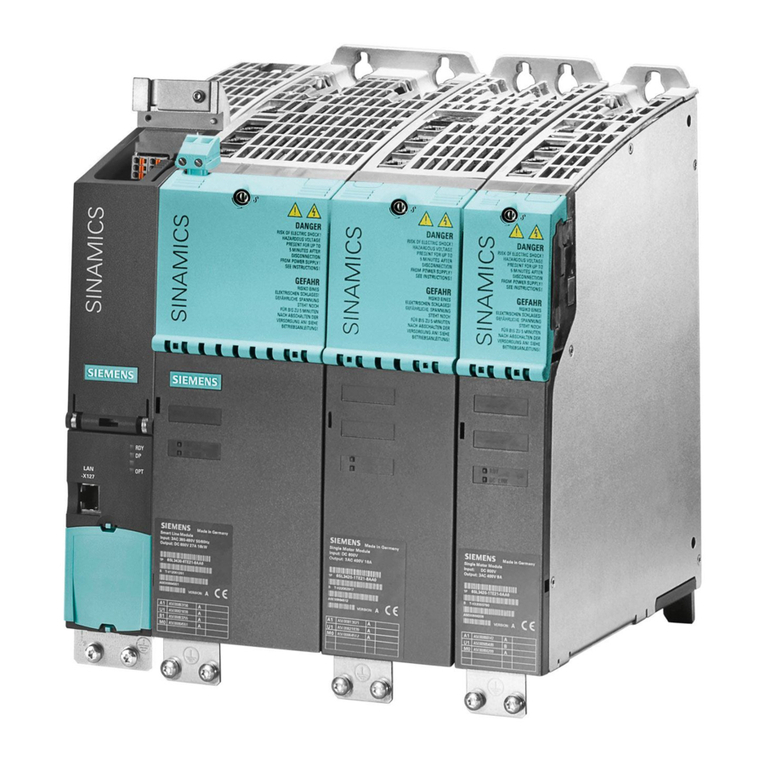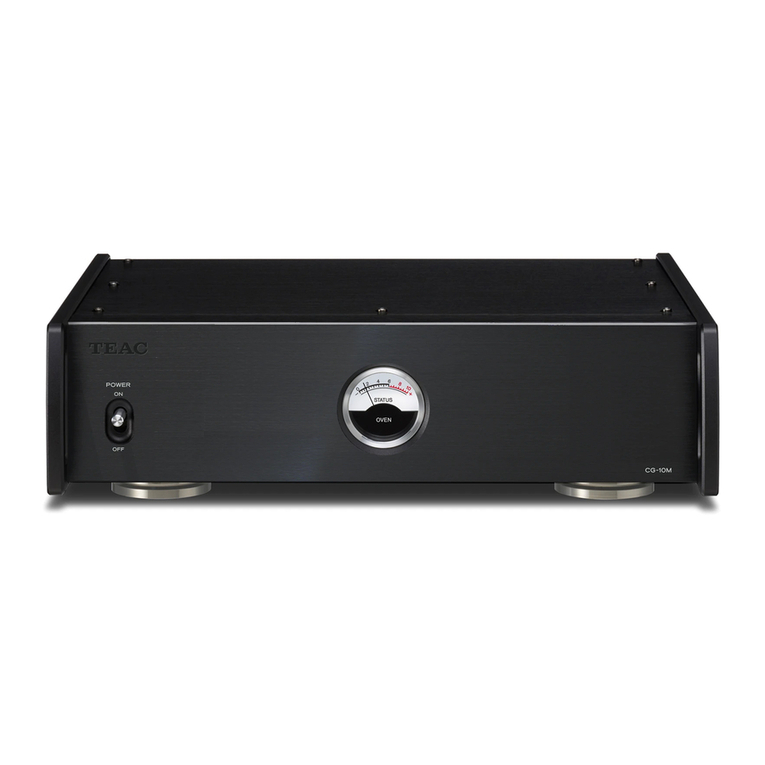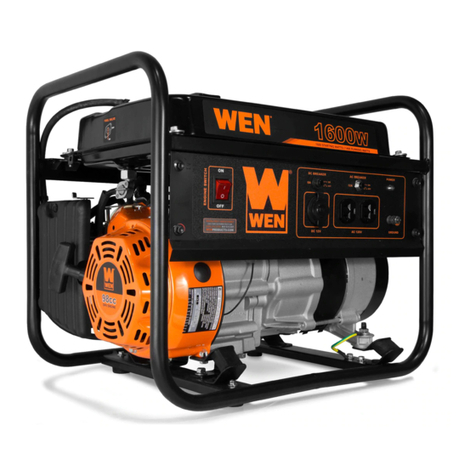TEXIO FGX-2220 User manual

B71-0406-01
INSTRUCTION MANUAL
ARBITRARY FUNCTION GENERATOR
FGX-2220

■ About Brands and Trademarks
“TEXIO” is the product brand name of our industrial electronic devices.
All company names and product names mentioned in this manual are the
trademark or the registered trademark of each company or group in each
country and region.
■ About the Instruction Manual
Permission from the copyright holder is needed to reprint the contents of this
manual, in whole or in part. Be aware that the product specifications and the
contents of this manual are subject to change for the purpose of improvement.

CONTENTS
USING THE PRODUCT SAFELY ··································· Ⅰ-Ⅳ
1 GETTING STARTED................................................................ 1
1-2. Panel Overview................................................................. 2
1-3. Setting Up the function Generator ..................................... 6
2. QUICK REFERENCE.............................................................. 7
2-1. How to use the Digital Inputs............................................. 7
2-2. How to use the Help Menu ................................................ 8
2-3. Selecting a Waveform ....................................................... 9
2-3-1. Square Wave.........................................................................................9
2-3-2. Ramp Wave.........................................................................................10
2-3-3. Sine Wave ...........................................................................................10
2-4. Modulation...................................................................... 10
2-4-1. AM.......................................................................................................10
2-4-2. FM .......................................................................................................11
2-4-3. FSK Modulation...................................................................................11
2-4-4. PM Modulation.....................................................................................12
2-4-5. SUM Modulation..................................................................................13
2-5. Sweep ............................................................................ 13
2-6. Burst .............................................................................. 14
2-7. ARB................................................................................ 15
2-7-1. ARB–Add Built-In Waveform................................................................15
2-7-2. ARB- Add Point....................................................................................15
2-7-3. ARB- Add Line.....................................................................................15
2-7-4. ARB–Output Section...........................................................................16
2-8. Utility Menu .................................................................... 16
2-8-1. Save ....................................................................................................16
2-8-2. Recall...................................................................................................17
2-9. Frequency Counter ......................................................... 17
2-9-1. Frequency Counter..............................................................................17
2-10. Coupling ....................................................................... 17
2-10-1. Frequency Coupling...........................................................................17
2-10-2. Amplitude Coupling............................................................................18
2-11. Tracking........................................................................ 18
2-12. Menu Tree .................................................................... 19
2-12-1. Waveform ..........................................................................................19
2-12-2. ARB-Display ......................................................................................19
2-12-3. ARB-Edit............................................................................................20
2-12-4. ARB- Built In......................................................................................20
2-12-5. ARB-Save..........................................................................................21
2-12-6. ARB-Load..........................................................................................21
2-12-7. ARB-Output .......................................................................................22
2-12-8. MOD ..................................................................................................22
2-12-9. SWEEP..............................................................................................23

2-12-10. SWEEP- More .................................................................................23
2-12-11. Burst- N Cycle..................................................................................24
2-12-12. Burst –Gate.....................................................................................24
2-12-13. UTIL.................................................................................................25
2-12-14. CH1/CH2 .........................................................................................25
2-13. Default Settings ............................................................ 25
3. OPERATION ........................................................................ 27
3-1. Select a Waveform.......................................................... 27
3-1-1. Sine Wave ...........................................................................................27
3-1-2. Square Wave.......................................................................................27
3-1-3. Setting the Pulse Width .......................................................................28
3-1-4. Setting a Ramp Waveform...................................................................30
3-1-5. Selecting a Noise Waveform................................................................31
3-1-6.Setting the Frequency...........................................................................32
3-1-7. Setting the Amplitude...........................................................................33
3-1-8. Setting the DC Offset...........................................................................34
4. MODULATION...................................................................... 35
4-1. Amplitude Modulation (AM) ............................................. 35
4-1-1. Selecting AM Modulation.....................................................................36
4-1-2. AM Carrier Shape................................................................................36
4-1-3. Carrier Frequency................................................................................37
4-1-4. Modulating Wave Shape......................................................................38
4-1-5. AM Frequency .....................................................................................39
4-1-6. Modulation Depth.................................................................................40
4-1-7. Selecting the (AM) Modulation Source ................................................41
4-2. Frequency Modulation (FM)............................................. 42
4-2-1. Selecting Frequency Modulation (FM).................................................43
4-2-2. FMCarrier Shape.................................................................................43
4-2-3. FM Carrier Frequency..........................................................................43
4-2-4. FM Wave Shape..................................................................................45
4-2-5. FM Frequency......................................................................................46
4-2-6. Frequency Deviation............................................................................47
4-2-7. Selecting (FM) Modulation Source.......................................................48
4-3. Frequency Shift Keying (FSK) Modulation........................ 49
4-3-1. Selecting FSK Modulation....................................................................50
4-3-2. FSK Carrier Shape ..............................................................................50
4-3-3. FSK Carrier Frequency........................................................................50
4-3-4. FSK Hop Frequency............................................................................51
4-3-5. FSK Rate.............................................................................................53
4-3-6. FSK Source .........................................................................................54
4-4. Phase Modulation (PM) ................................................... 55
4-4-1. Selecting Phase Modulation (PM)........................................................55
4-4-2. PM Carrier Waveform..........................................................................56
4-4-3. PM Carrier Frequency .........................................................................56

4-4-4. PM Wave Shape..................................................................................57
4-4-5. PM Frequency .....................................................................................58
4-4-6. Phase Deviation...................................................................................59
4-4-7. Select the PM Source..........................................................................60
4-5. SUM modulation ............................................................. 61
4-5-1. Selecting SUM modulation...................................................................61
4-5-2. SUM Carrier Waveform .......................................................................62
4-5-3. SUM Carrier Frequency.......................................................................62
4-5-4. SUM Waveform ...................................................................................63
4-5-5. Modulating Waveform Frequency........................................................64
4-5-6. SUM Amplitude....................................................................................65
4-5-7. Select the SUM Amplitude Source.......................................................66
4-6. Frequency Sweep ........................................................... 67
4-6-1. Selecting Sweep Mode........................................................................68
4-6-2. Setting Start and Stop Frequency........................................................68
4-6-3. Center Frequency and Span................................................................69
4-6-4. Sweep Mode........................................................................................71
4-6-5. Sweep Time.........................................................................................72
4-6-6. Marker Frequency................................................................................73
4-6-7. Sweep Trigger Source.........................................................................74
4-7. Burst Mode ..................................................................... 75
4-7-1. Selecting Burst Mode...........................................................................75
4-7-2. Burst Modes.........................................................................................76
4-7-3. Burst Frequency ..................................................................................76
4-7-4. Burst Cycle/Burst Count ......................................................................77
4-7-5. Infinite Burst Count..............................................................................79
4-7-6. Burst Period.........................................................................................79
4-7-7. Burst Phase.........................................................................................80
4-7-8. Burst Trigger Source............................................................................82
4-7-9. Burst Delay..........................................................................................83
4-7-10. Burst Trigger Output..........................................................................84
5. SECONDARY SYSTEM FUNCTION SETTINGS .................... 86
5-1. Save and Recall.............................................................. 86
5-2. System and Settings ....................................................... 89
5-2-1. Viewing and Updating the Firmware....................................................89
5-2-2. Setting the Buzzer Sound....................................................................89
5-2-3. Frequency Counter..............................................................................90
5-3. Dual channel Settings ..................................................... 91
5-3-1. Frequency Coupling.............................................................................91
5-3-2. Amplitude Coupling..............................................................................92
5-3-3. Tracking...............................................................................................93
6. CHANNEL SETTINGS .......................................................... 94
6-1. Output Impedance........................................................... 94
6-2. Selecting the Output Phase............................................. 95

6-3. Synchronizing the Phase................................................. 96
6-4. DSO Link ........................................................................ 96
7. ARBITRARY WAVEFORMS................................................... 98
7-1. Inserting Built-In Waveforms ........................................... 98
7-1-1. Create an AbsAtan Waveform.............................................................98
7-1-2. Built-in Waveform ................................................................................99
7-2. Display an Arbitrary Waveform .......................................100
7-2-1. Set the Horizontal Display Range......................................................100
7-2-2. Set the Vertical Display Properties ....................................................101
7-2-3. Page Navigation (Back Page)............................................................103
7-2-4. Page Navigation (Next Page) ............................................................104
7-2-5. Display...............................................................................................106
7-3. Editing an Arbitrary Wavefrom ........................................106
7-3-1. Adding a Point to an Arbitrary Waveform...........................................106
7-3-2. Adding a Line to an Arbitrary Waveform............................................108
7-3-3. Copy a Waveform..............................................................................110
7-3-4. Clear the Waveform...........................................................................111
7-3-5.ARB Protection...................................................................................113
7-4.Ouput an Arbitrary Waveform ..........................................115
7-4-1. Ouput Arbitrary Waveform.................................................................115
7-5. Saving/Loading an Arbitrary Waveform ...........................116
7-5-1. Saving a Waveform to Internal Memory.............................................116
7-5-2. Saving a Waveform to USB Memory .................................................118
7-5-3. Load a Waveform from Internal Memory ...........................................120
7-5-4. Load a Waveform from USB..............................................................122
8. REMOTE INTERFACE.........................................................125
8-1. Establishing a Remote Connection .................................125
8-1-1. Configure USB interface....................................................................125
8-1-2. Remote control terminal connection ..................................................125
8-1-3. Command Syntax..............................................................................126
8-2. Command List................................................................130
8-3. System Commands ........................................................133
8-3-1. SYSTem:ERRor?...............................................................................133
8-3-2. *IDN?.................................................................................................133
8-3-3. *RST..................................................................................................133
8-3-4. SYSTem:VERSion?...........................................................................134
8-3-5. *OPC .................................................................................................134
8-3-6. *OPC? ...............................................................................................135
8-4. Status Register Commands ............................................135
8-4-1. *CLS..................................................................................................135
8-4-2. *ESE..................................................................................................135
8-4-3. *ESR?................................................................................................136
8-4-4. *STB?................................................................................................136

8-4-5. *SRE..................................................................................................137
8-5. System Remote Commands ...........................................137
8-5-1. SYSTem:LOCal.................................................................................137
8-5-2. SYSTem:REMote ..............................................................................138
8-6. Apply Commands ...........................................................138
8-6-1. SOURce[1|2]:APPLy:SINusoid..........................................................139
8-6-2. SOURce[1|2]:APPLy:SQUare............................................................140
8-6-3. SOURce[1|2]:APPLy:RAMP ..............................................................140
8-6-4. SOURce[1|2]:APPLy:PULSe .............................................................141
8-6-5. SOURce[1|2]:APPLy:NOISe..............................................................141
8-6-6. SOURce[1|2]:APPLy:USER...............................................................142
8-6-7. SOURce[1|2]:APPLy?........................................................................142
8-7. Output Commands .........................................................142
8-7-1. SOURce[1|2]:FUNCtion.....................................................................143
8-7-2. SOURce[1|2]:FREQuency.................................................................144
8-7-3. SOURce[1|2]:AMPlitude ....................................................................145
8-7-4. SOURce[1|2]:DCOffset......................................................................146
8-7-5. SOURce[1|2]:SQUare:DCYCle..........................................................147
8-7-6. SOURce[1|2]:RAMP:SYMMetry.........................................................147
8-7-7. OUTPut[1|2].......................................................................................148
8-7-8. OUTPut[1|2]:LOAD............................................................................149
8-7-9. SOURce[1|2]:VOLTage:UNIT............................................................149
8-8. Pulse Configuration Commands......................................150
8-8-1. SOURce[1|2]:PULSe:PERiod............................................................150
8-8-2. SOURce[1|2]:PULSe:WIDTh .............................................................151
8-9. Amplitude Modulation (AM) Commands ..........................152
8-9-1. AM Overview .....................................................................................152
8-9-2. SOURce[1|2]:AM:STATe...................................................................153
8-9-3. SOURce[1|2]:AM:SOURce................................................................153
8-9-4. SOURce[1|2]:AM:INTernal:FUNCtion................................................154
8-9-5. SOURce[1|2]:AM:INTernal:FREQuency............................................154
8-9-6. SOURce[1|2]:AM:DEPTh...................................................................155
8-10. Frequency Modulation (FM) Commands........................156
8-10-1. FM Overview....................................................................................156
8-10-2. SOURce[1|2]:FM:STATe .................................................................156
8-10-3. SOURce[1|2]:FM:SOURce ..............................................................157
8-10-4. SOURce[1|2]:FM:INTernal:FUNCtion..............................................157
8-10-5. SOURce[1|2]:FM:INTernal:FREQuency ..........................................158
8-10-6. SOURce[1|2]:FM:DEViation.............................................................159
8-11. Frequency-Shift Keying (FSK) Commands ....................160
8-11-1. FSK Overview..................................................................................160
8-11-2. SOURce[1|2]:FSKey:STATe............................................................160
8-11-3. SOURce[1|2]:FSKey:SOURce.........................................................161
8-11-4. SOURce[1|2]:FSKey:FREQuency ...................................................161

8-11-5. SOURce[1|2]:FSKey:INTernal:RATE...............................................162
8-12. Phase Modulation (PM)Commands ...............................163
8-12-1. PM Overview ...................................................................................163
8-12-2. SOURce[1|2]:PM:STATe.................................................................163
8-12-3. SOURce[1|2]:PM:SOURce..............................................................164
8-12-4. SOURce[1|2]:PM:INTernal:FUNction...............................................164
8-12-5. SOURce[1|2]:PM:INTernal:FREQuency..........................................165
8-12-6. SOURce[1|2]:PM:DEViation ............................................................166
8-13. SUM Modulation (SUM) Commands..............................167
8-13-1. SUM Overview.................................................................................167
8-13-2. SOURce[1|2]:SUM:STATe...............................................................167
8-13-3. SOURce[1|2]:SUM:SOURce............................................................168
8-13-4. SOURce[1|2]:SUM:INTernal:FUNction............................................168
8-13-5.SOURce[1|2]:SUM:INTernal:FREQuency.........................................169
8-13-6. SOURce[1|2]:SUM:AMPL................................................................169
8-14. Frequency Sweep Commands ......................................171
8-14-1. Sweep Overview..............................................................................171
8-14-2. SOURce[1|2]:SWEep:STATe ..........................................................172
8-14-3. SOURce[1|2]:FREQuency:STARt....................................................172
8-14-4. SOURce[1|2]:FREQuency:STOP ....................................................173
8-14-5. SOURce[1|2]:FREQuency:CENTer .................................................173
8-14-6. SOURce[1|2]:FREQuency:SPAN ....................................................174
8-14-7. SOURce[1|2]:SWEep:SPACing.......................................................175
8-14-8. SOURce[1|2]:SWEep:TIME.............................................................175
8-14-9. SOURce[1|2]:SWEep:SOURce .......................................................176
8-14-10. SOURce[1|2]:MARKer:FREQuency...............................................177
8-14-11. SOURce[1|2]:MARKer...................................................................177
8-15. Burst Mode Commands ................................................178
8-15-1. Burst Mode Overview ......................................................................178
8-15-2. SOURce[1|2]:BURSt:STATe............................................................179
8-15-3. SOURce[1|2]:BURSt:MODE............................................................180
8-15-4. SOURce[1|2]:BURSt:NCYCles........................................................180
8-15-5. SOURce[1|2]:BURSt:INTernal:PERiod............................................181
8-15-6. SOURce[1|2]:BURSt:PHASe...........................................................182
8-15-7. SOURce[1|2]:BURSt:TRIGger:SOURce..........................................183
8-15-8. SOURce[1|2]:BURSt:TRIGger:DELay .............................................184
8-15-9. SOURce[1|2]:BURSt:TRIGger:SLOPe.............................................184
8-15-10. SOURce[1|2]:BURSt:GATE:POLarity............................................185
8-15-11. SOURce[1|2]:BURSt:OUTPut:TRIGger:SLOPe.............................185
8-15-12. OUTPut[1|2]:TRIGger....................................................................186
8-15-13. SOURce[1|2]:BURSt:TRIGger:MANual .........................................187
8-16. Arbitrary Waveform Commands ....................................187
8-16-1. Arbitrary Waveform Overview..........................................................187
8-16-2. SOURce[1|2]:FUNCtion USER........................................................188
8-16-3. SOURce[1|2]:DATA:DAC.................................................................188

8-16-4. SOURce[1|2]:ARB:EDIT:COPY.......................................................189
8-16-5. SOURce[1|2]:ARB:EDIT:DELete .....................................................189
8-16-4. SOURce[1|2]:ARB:EDIT:DELete:ALL..............................................190
8-16-7. SOURce[1|2]:ARB:EDIT:POINt .......................................................190
8-16-8. SOURce[1|2]:ARB:EDIT:LINE.........................................................190
8-16-9. SOURce[1|2]:ARB:EDIT:PROTect ..................................................191
8-16-10. SOURce[1|2]:ARB:EDIT:PROTect:ALL.........................................191
8-16-11. SOURce[1|2]:ARB:EDIT:UNProtect...............................................191
8-16-12. SOURce[1|2]:ARB:OUTPut ...........................................................191
8-17. COUNTER Commands .................................................192
8-17-1. COUNTER:STATE ..........................................................................192
8-17-2. COUNter:GATe................................................................................192
8-17-3. COUNter:VALue?............................................................................193
8-18. PHASE Commands ......................................................193
8-18-1. SOURce[1|2]:PHASe.......................................................................193
8-18-2. SOURce[1|2]:PHASe:SYNChronize ................................................194
8-19. COUPLE Commands....................................................194
8-19-1.SOURce[1|2]:FREQuency:COUPle:MODE ......................................194
8-19-2. SOURce[1|2]:FREQuency:COUPle:OFFSet....................................194
8-19-3. SOURce[1|2]:FREQuency:COUPle:RATio......................................195
8-19-4. SOURce[1|2]:AMPlitude:COUPle:STATe........................................195
8-19-5. SOURce[1|2]:TRACk.......................................................................196
8-20. Save and Recall Commands.........................................196
8-20-1. *SAV................................................................................................197
8-20-2. *RCL................................................................................................197
8-20-3. MEMory:STATe:DELete ..................................................................197
8-20-4. MEMory:STATe:DELete ALL...........................................................197
8-21. Error Messages............................................................198
8-21-1.Command Error Codes.....................................................................198
8-21-2.Execution Errors...............................................................................199
8-21-3.Query Errors.....................................................................................204
8-21-4.Arbitrary Waveform Errors................................................................204
8-22. SCPI Status Register ...................................................205
8-22-1. Register types..................................................................................205
8-22-2. FGX-2220 Status System................................................................206
8-22-3. Questionable Status Register..........................................................207
8-22-4. Standard Event Status Registers.....................................................207
8-22-5. The Status Byte Register.................................................................208
8-22-6. Output Queue..................................................................................209
8-22-7. Error Queue.....................................................................................209
9. APPDENIX..........................................................................210
9-1. FGX-2220 Specifications................................................210
9-2. External Dimensions Figure ...........................................214
9-3. Usage Notes for FGX-2220 ............................................215

I
USING THE PRODUCT SAFELY
■ Preface
To use the product safely, read instruction manual to the end. Before using
this product, understand how to correctly use it. If you read the manuals but
you do not understand how to use it, ask us or your local dealer. After you
read the manuals, save it so that you can read it anytime as required.
■ Pictorial indication
The manuals and product show the warning and caution items required to
safely use the product. The following pictorial indication is provided.
Pictorial
indication
Some part of this product or the manuals may show this
pictorial indication. In this case, if the product is
incorrectly used in that part, a serious danger may be
brought about on the user's body or the product. To use
the part with this pictorial indication, be sure to refer to the
manuals.
WARNING
!
If you use the product, ignoring this indication, you may get
killed or seriously injured. This indication shows that the
warning item to avoid the danger is provided.
CAUTION
!
If you incorrectly use the product, ignoring this indication,
you may get slightly injured or the product may be
damaged. This indication shows that the caution item to
avoid the danger is provided.
Please be informed that we are not responsible for any damages to the user or
to the third person, arising from malfunctions or other failures due to wrong use
of the product or incorrect operation, except such responsibility for damages as
required by law.

II
USING THE PRODUCT SAFELY
WARNING
!
CAUTION
!
■ Do not remove the product's covers and panels
Never remove the product's covers and panels for any purpose.
Otherwise, the user's electric shock or fire may be incurred.
■ Warning on using the product
Warning items given below are to avoid danger to user's body and life and
avoid the damage or deterioration of the product. Use the product, observing
the following warning and caution items.
■ Warning items on power supply
● Power supply voltage
The rated power supply voltages of the product are 100, 120, 220 and
240VAC. The rated power supply voltage for each product should be
confirmed by reading the label attached on the back of the product or by the
“rated” column shown in the instruction manual. The specification of power
cord attached to the products is rated to 125VAC for all products which are
designed to be used in the areas where commercial power supply voltage is
not higher than 125VAC. Accordingly, you must change the power cord if
you want to use the product at the power supply voltage higher than 125VAC.
If you use the product without changing power cord to 250VAC rated one,
electric shock or fire may be caused. When you used the product equipped
with power supply voltage switching system, please refer to the corresponding
chapter in the instruction manuals of each product.
● Power cord
(IMPORTANT) The attached power cord set can be used for
this device only.
If the attached power cord is damaged, stop using the product and call us or
your local dealer. If the power cord is used without the damage being
removed, an electric shock or fire may be caused.
● Protective fuse
If an input protective fuse is blown, the product does not operate. For a
product with external fuse holder, the fuse may be replaced. As for how to
replace the fuse, refer to the corresponding chapter in the instruction
manual. If no fuse replacement procedures are indicated, the user is not
permitted to replace it. In such case, keep the case closed and consult us
or your local dealer. If the fuse is incorrectly replaced, a fire may occur.

III
USING THE PRODUCT SAFELY
■ Warning item on Grounding
If the product has the GND terminal on the front or rear panel surface, be sure
to ground the product to safely use it.
■ Warnings on Installation environment
● Operating temperature and humidity
Use the product within the operating temperature indicated in the “rating”
temperature column. If the product is used with the vents of the product
blocked or in high ambient temperatures, a fire may occur. Use the product
within the operating humidity indicated in the “rating” humidity column.
Watch out for condensation by a sharp humidity change such as transfer to a
room with a different humidity. Also, do not operate the product with wet
hands. Otherwise, an electric shock or fire may occur.
● Use in gas
Use in and around a place where an inflammable or explosive gas or steam is
generated or stored may result in an explosion and fire. Do not operate the
product in such an environment. Also, use in and around a place where a
corrosive gas is generated or spreading causes a serious damage to the
product. Do not operate the product in such an environment.
● Installation place
Do not insert metal and inflammable materials into the product from its vent
and spill water on it. Otherwise, electric shock or fire may occur.
■ Do not let foreign matter in
Do not insert metal and inflammable materials into the product from its vent
and spill water on it. Otherwise, electric shock or fire may occur.
■ Warning item on abnormality while in use
If smoke or fire is generated from the product while in use, stop using the
product, turn off the switch, and remove the power cord plug from the outlet.
After confirming that no other devices catch fire, ask us or your local dealer.

IV
USING THE PRODUCT SAFELY
■ Input / Output terminals
Maximum input to terminal is specified to prevent the product from being
damaged. Do not supply input, exceeding the specifications that are indicated
in the "Rating" column in the instruction manual of the product. Also, do not
supply power to the output terminals from the outside. Otherwise, a product
failure is caused.
■ Calibration
Although the performance and specifications of the product are checked under
strict quality control during shipment from the factory, they may be deviated
more or less by deterioration of parts due to their aging or others.
It is recommended to periodically calibrate the product so that it is used with its
performance and specifications stable. For consultation about the product
calibration, ask us or your local dealer.
■ Daily Maintenance
When you clean off the dirt of the product covers, panels, and knobs, avoid
solvents such as thinner and benzene. Otherwise, the paint may peel off or
resin surface may be affected. To wipe off the covers, panels, and knobs, use
a soft cloth with neutral detergent in it.
During cleaning, be careful that water, detergents, or other foreign matters do
not get into the product.
If a liquid or metal gets into the product, an electric shock and fire are caused.
During cleaning, remove the power cord plug from the outlet.
Use the product correctly and safely, observing the above warning and caution
items. Because the instruction manual indicates caution items even in
individual items, observe those caution items to correctly use the product.
If you have questions or comments about the manuals, ask us or E-Mail us.

1
1 GETTING STARTED
The Getting started chapter introduces the function generator’s main features,
appearance, set up procedure and power-up.
1-1. Main Features
Model name
Frequency bandwidth
FGX-2220
1μHz~20MHz
Performance
•DDS Function Generator series
•1μHz high frequency resolution maintained at full range
•20ppm frequency stability
•Arbitrary Waveform Capability
120 MSa/s sample rate
60 MSa/s repetition rate
4k-point waveform length
10 groups of 4k waveform memories
True waveform output to display
User-defined output section
DWR (Direct Waveform Reconstruction) capability
Waveform editing via PC
Features
•Sine, Square, Ramp, Pulse, Noise, standard waveforms
•Internal and external LIN/LOG sweep with marker output
•Int/Ext AM, FM, PM, FSK, SUM modulation
•Burst function with internal and external triggers without
marker output
•Store/recall 10 groups of setting memories
•Output overload protection
Interface
•USB interface as standard
•3.5 inch Color TFT LCD (320 X 240) graphical user
interface
•AWES (Arbitrary Waveform Editing Software) PC software

2
1-2. Panel Overview
Front Panel
/
LCD
Display Function keys,
Return key Scroll
Wheel Output
Terminals
Number pad Power
switch
Output key
Channel
select key
Arrow keys
Operation keys
LCD Display
TFT color display, 320 x 240 resolution.
Function Keys
F1~F5
F1
Activates functions which appear on the
right-hand side of the LCD display.
Return Key
Return
Goes back to the previous menu level.
Operation Keys
Waveform
The waveform key is used to select a
type of waveform.
FREQ/Rate
The FREQ/Rate key is used to set the
frequency or sample rate.
AMP
AMPL sets the waveform amplitude.
DC Offset
Sets the DC offset.
UTIL
The UTIL key is used to access the
save and recall options, update and
view the firmware version, access the
calibration options, output impedance
settings and frequency meter.
ARB
ARB is used to set the arbitrary
waveform parameters.

3
MOD
Sweep
Burst
The MOD, Sweep and Burst keys are
used to set the modulation, sweep and
burst settings and parameters.
Preset Key
Preset
The preset key is used to recall a preset
state.
Output Key
OUTPUT
The Output key is used to turn on or off
the waveform output.
Channel Select
Key
CH1/CH2
The channel select key is used to
switch between the two output
channels.
Output ports
OUTPUT
50Ω
50Ω
CH2
CH1
CH1: Channel 1 output port
CH2: Channel 2 output port
Power Button
Turns the power on or off.
Arrow Keys
Used to select digits when editing
parameters.
Scroll Wheel
The scroll wheel is used to edit values
and parameters.
Decrease Increase
Keypad
0/
321
4
7 8
5
9
6
The digital keypad is used to enter
values and parameters. The keypad is
often used in conjunction with the arrow
keys and variable knob.

4
Rear Panel
USB Host port Trigger output
Input Terminals
USB Device port
FanPower socket input
Trigger Input
IN
OUT
Trigger
Counter
Trigger
MOD
External trigger input. Used to receive
external trigger signals.
Trigger Output
IN
OUT
Trigger
Counter
Trigger
MOD
Marker output signal. Used for Sweep
and ARB mode only.
Fan
Fan.
Power Input
Socket
AC 100-240V
50-60Hz 25W MAX
Power input: 100~240V AC
50~60Hz.
USB Host
Host
USB type-A host port.

5
USB Device Port
Device
USB type-B device port is used to
connect the function generator to a PC
for remote control.
Counter Input
IN
OUT
Trigger
Counter
Trigger
MOD
Frequency counter input.
MOD Input
IN
OUT
Trigger
Counter
Trigger
MOD
Modulation input terminal.
Display
Soft Menu
Keys
Status Tabs
Parameter
Windows
Waveform
Display
Parameter
Windows
The Parameter display and edit window.
Status Tabs
Displays the current channel and setting status.
Waveform Display
Used to display the waveform
Soft Menu Keys
The function keys (F1~F5) beside the Soft Menu keys
correspond to the soft keys.

6
1-3. Setting Up the function Generator
Background
This section describes how to adjust the handle and
power up the function generator.
Adjusting the
Handle
Pull out the handle
sideways and rotate it.
/
A FG -2 2 2 5
Place the FGX-2220
horizontally,
Or tilt the stand.
Place the handle
vertically to hand carry.
Power Up
1. Connect the power cord to the
socket on the rear panel.
2. Turn on the power switch on the
front panel.
3. When the power switch is turned on the screen
displays the loading screen.
The function generator is now ready to be used.

7
2. QUICK REFERENCE
This chapter describes the operation shortcuts, built-in help and factory default
settings. This chapter is to be used as a quick reference, for detailed explanations
on parameters, settings and limitations, please see the operation chapters
2-1. How to use the Digital Inputs
Background
The FGX-2220 has three main types of digital inputs:
the number pad, arrow keys and scroll wheel. The
following instructions will show you how to use the
digital inputs to edit parameters.
1. To select a menu item, press
the corresponding function
keys below (F1~F5). For
example the function key F1
corresponds to the Soft key
“Sine”.
2. To edit a digital value, use
the arrow keys to move the
cursor to the digit that
needs to be edited.
3. Use the scroll wheel to edit
the parameter. Clockwise
increases the value, counter
clockwise decreases the
value.
4. Alternatively, the number pad
can be used to set the value of
a highlighted parameter.
0/
321
4
7 8
5
9
6
Table of contents
Other TEXIO Portable Generator manuals
Popular Portable Generator manuals by other brands
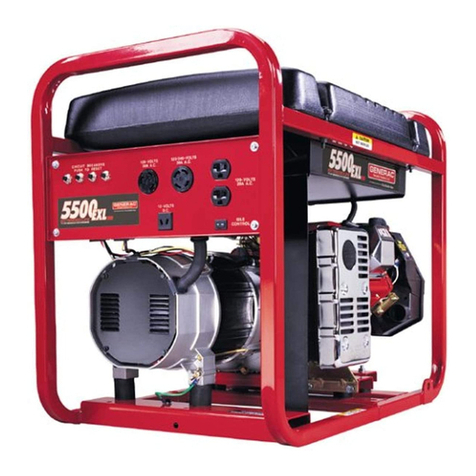
Generac Power Systems
Generac Power Systems 5500EXL owner's manual

Winco
Winco WL22000VE-03/A Installation and operator's manual
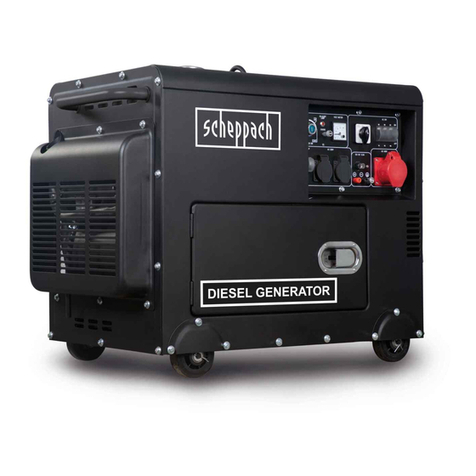
Scheppach
Scheppach DGS5500 Translation of original instruction manual
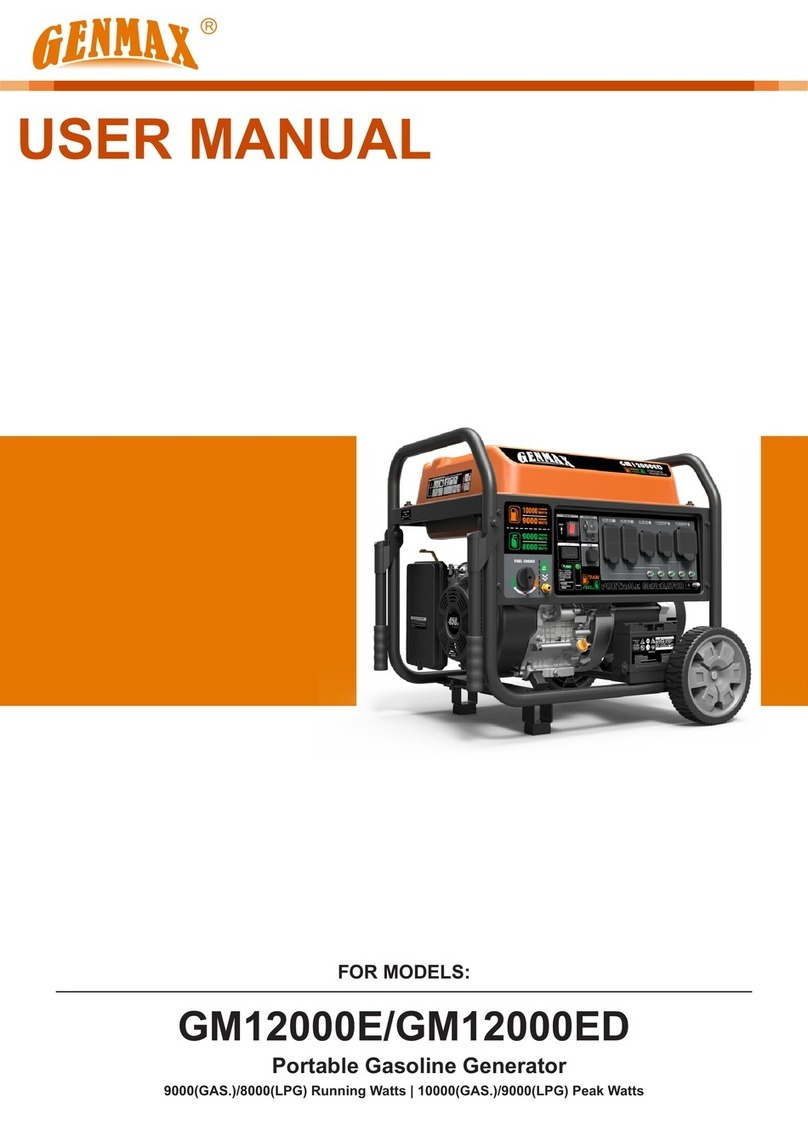
GENMAX
GENMAX GM12000E user manual

NueTec
NueTec AT4K Operation and installation manual
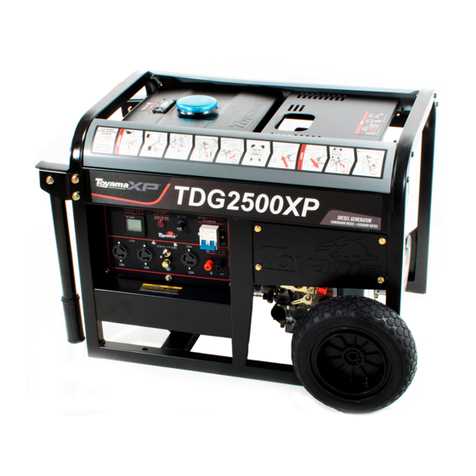
Toyama
Toyama TDG2500XP owner's manual
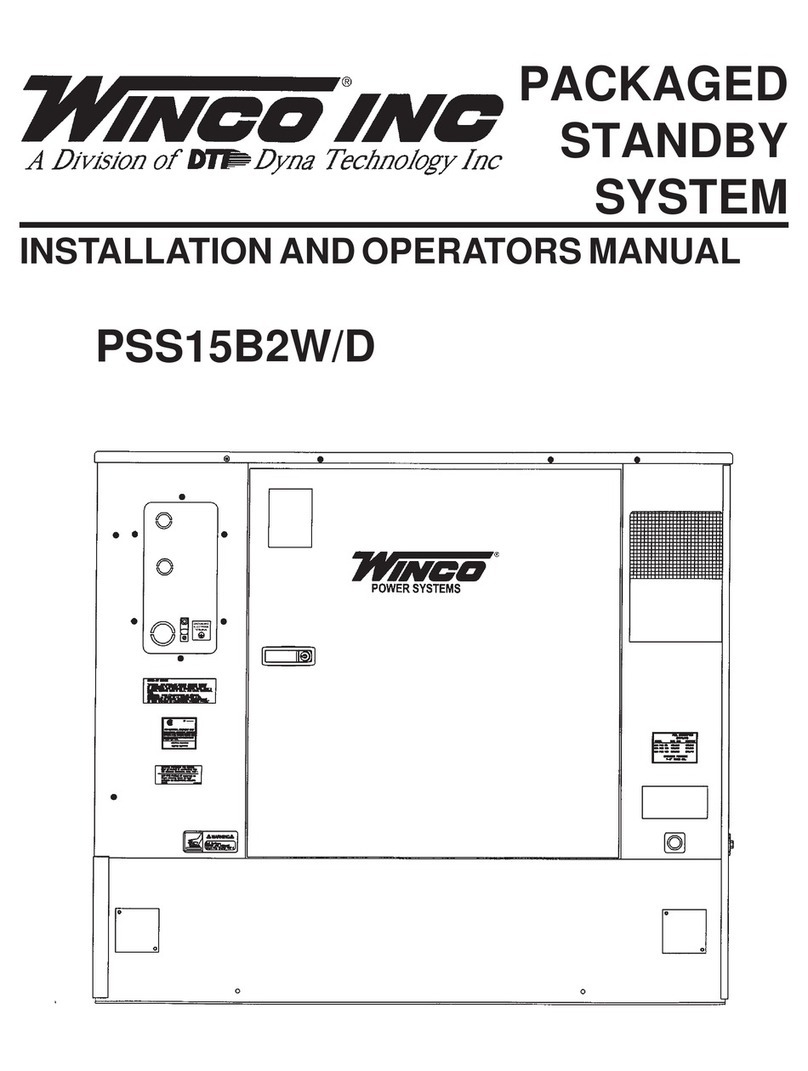
Winco
Winco PSS15B2W/D Installation and operator's manual
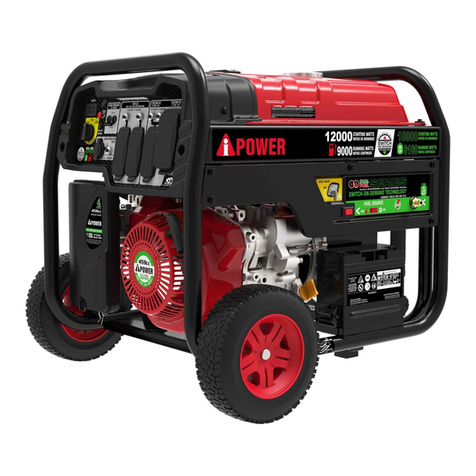
iPower
iPower SUA12000ED owner's manual

Teleco
Teleco Telair ENERGY 2510D Use and maintenance manual and instructions for installation
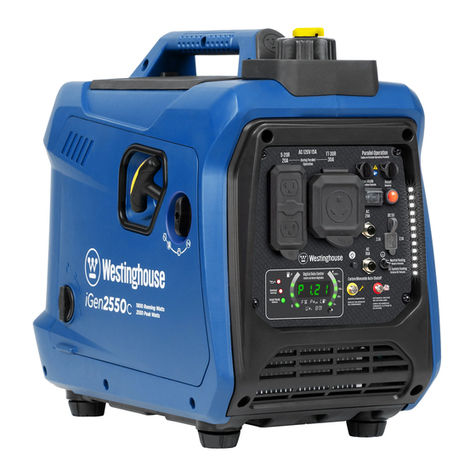
Westinghouse
Westinghouse iGen2550c quick start guide
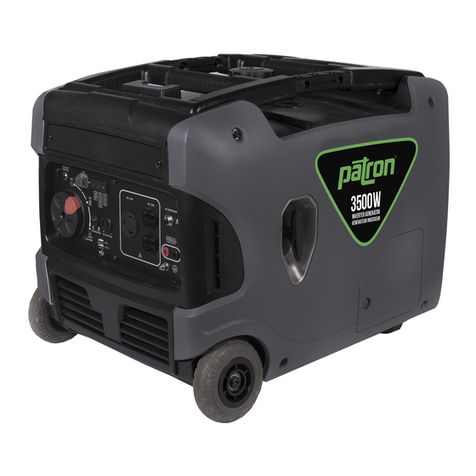
Rentquip
Rentquip patron GI-3500 Operation manual
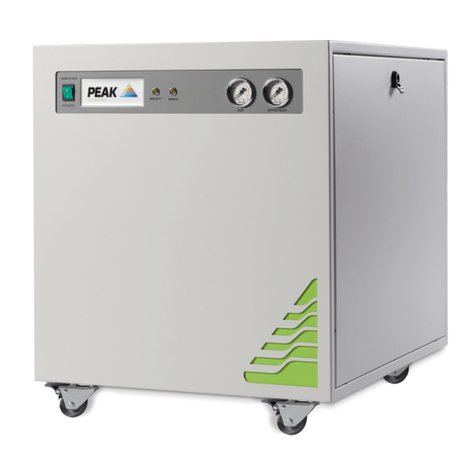
Peak
Peak Genius 1025 user manual
